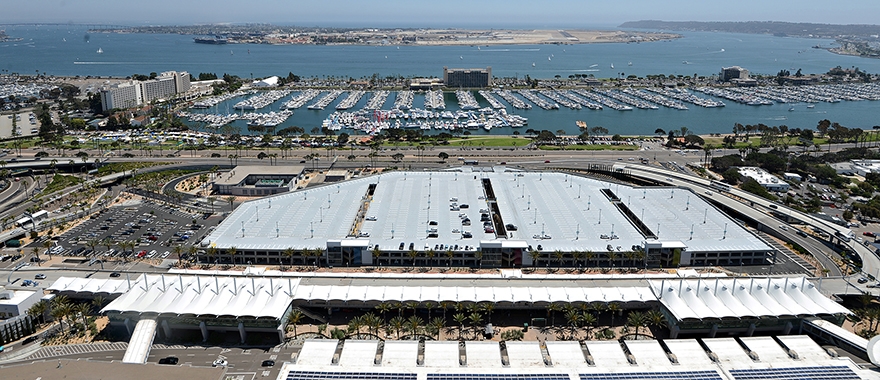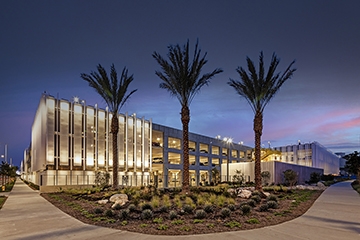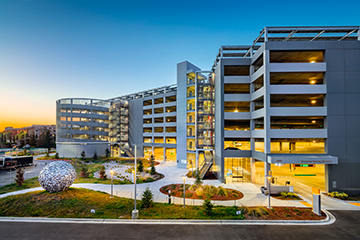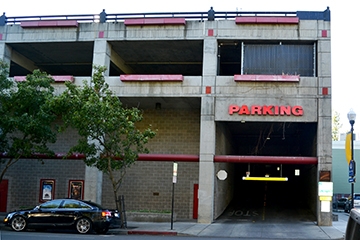Choosing the Right Delivery Method for Your Parking Structure

Structured parking is a significant investment. In addition to the time and cost associated with designing and building new parking, a key factor in the success of your project is identifying the right delivery method. The delivery method you choose will dictate the contractual relationship between owner, designer and contractor.
It will also impact the amount of time, resources and level of experience those involved will need to provide in order to deliver the project. Lastly, it can affect the schedule, price and quality of the final project. Therefore, careful thought should be given to understanding your programming needs, project goals and priorities, potential constraints and the desired level of stakeholder involvement and the amount of experience your stakeholders have with various delivery methods.
To complicate matters further, multiple variations exist within many of the common delivery methods. The good news is, this means there is a surprising amount of flexibility available to customize a procurement and delivery process to fit your project’s needs. However, it also highlights the importance of identifying each of those needs and factoring them into your decision.
Nailing Your Programming
Now that you’ve identified a need for structured parking, it’s time to explore other key drivers. How much parking do you need and where will it be located? Parking demand studies can help identify how many stalls will be needed to meet demand, while feasibility studies can explore the suitability of various locations by considering zoning requirements, height limits and creating preliminary construction cost estimates.
In addition to these fundamentals, what other goals do you have for your parking structure? Are you considering integrating another use into the parking structure? Is sustainability a priority for your stakeholders? Will the structure be located in an area where high levels of architecture will be desired or required? Consider the many possibilities with an eye towards priority and order of magnitude. Which program elements or design features on your list are must-haves and which have flexibility?
Understanding Your Budget
This, of course, leads to one of the primary project drivers: budget.
Understanding what your budget is and how that stacks up against your list of goals can help make the delivery process smoother and more successful. In some cases, you may have detailed programming documents that provide estimates of construction costs. In other cases, you may wish to leverage your design team to help develop a program that fits within your budget. Either way understanding your budget will help you make a decision regarding how to deliver your parking structure.
 Design-Bid-Build
Design-Bid-Build
Delivery Method Overview
While there are a number of different delivery methods used to deliver parking structure projects, each can have multiple variations, from procurement methods to design methodology. Therefore, it might be most useful to think of them as a spectrum with a sliding scale. At one end of that spectrum, the design and construction teams exist within separate silos, with minimal opportunities for collaboration. At the other end, the owner works with the design and construction firms as a unified, collaborative team.
The sliding scale starts with design-bid-build, the most traditional and well-understood delivery method available. The design team and construction team are chosen under separate contracts with clearly defined roles. It is applicable to large, small, simple and complex parking projects. However, because it isolates the design and construction teams into two separate contracts, this method provides a limited opportunity for collaboration and innovation and often ends in finger pointing. Design-bid-build also often results in a lengthier schedule than other delivery methods.
 Construction Manager at Risk
Construction Manager at Risk
Construction manager at risk (CMAR)exists a little farther down the collaborative spectrum. While the designer and contractor are still hired under separate contracts with the owner, the contractor becomes involved earlier in the design phase. This can result in more accurate cost data, a quicker schedule and provide more opportunity for collaboration.
A more complex but rapidly growing delivery method is design-build, which unites the designer and contractor into a single contract. This single-team approach centers on creating a collaborative environment that fosters creative innovation, which is especially valuable for complex projects. Studies show that design-build can significantly shorten the delivery window of a project and also provide greater value compared to other methods. However, due to its complexity, an inexperienced owner and design and delivery team may struggle to achieve good results.
 Design-Build
Design-Build
A variation of design-build, progressive design-build, sits at the most collaborative end of the delivery method spectrum. Like traditional design-build, it utilizes a single contract for designer and contractor. However, progressive design-build teams are selected primarily on qualifications with some component of fees. During design, the owner is integrated as part of the design-build team. Together, the owner, designer and contractor develop a guaranteed maximum price (GMP), typically arrived at between 30% and 60% design completion.
Other delivery methods, such as integrated project delivery (IPD), multi-prime and engineering, procurement and construction (EPC) delivery, are less common, but can also be found along this spectrum somewhere between design-bid-build and progressive design build.
Important Considerations
Since every parking project has unique goals and needs, selecting a delivery method is not a straightforward process. There are several things to consider that may help guide you to the right choice.
Amount of Preliminary Design: Some parking projects may have detailed project programs already developed by a preliminary design team. Others may have some defined components, but little to no formal programming. While the procurement process for most delivery methods can accommodate a wide range of preliminary design, it’s important to note that design-bid-build drawings must be complete before they go to bid. However, methods such as design-build can utilize everything from extensive design documents (called bridging documents) to a one-paragraph project description.
Prescriptive vs. Descriptive Elements: Consider which elements of your parking project are prescriptive, requiring minimal innovation on behalf of your team, and which are descriptive, requiring a high level of innovation. If your project is large and complex, with minimal programming, notable site constraints and/or design challenges that will require a high-level creativity and innovation to solve, the collaborative environment of a progressive design build might better suit your project.
Regardless, maintaining a balance between prescriptive and descriptive is important. While too many prescriptive elements may yield less value from design-build or CMAR, being too descriptive can potentially result in a project that does not take advantage of the creativity that results from true collaboration.

Project Size: The size and complexity of your parking structure can have an impact on what delivery method offers the most value. For instance, an airport ConRAC that is one piece of a larger terminal expansion or renovation project will likely have a complex group of stakeholders, large budget and protracted schedule. Therefore, a delivery method such as CMAR or design-build allows owners to take advantage of a contractor’s expertise in cost management to guide the design. However, less complex parking projects that have a smaller construction budget, such as under $15 million, offer fewer opportunities to leverage that expertise and therefore derive less value from those methods.
Legal Constraints: Some alternative delivery methods could face legal barriers in certain areas. For example, municipal charters, state laws, university guidelines, etc. may dictate or limit certain delivery methods.
Stakeholder Experience: Consider the amount of experience that the key decision makers for your project may have for a given delivery method and whether there is an advocate for one method over another. For instance, if your project seems like a good candidate for progressive design-build, but the ownership team responsible for delivery has significant reservations or limited experience with this method, it may not yield positive results.
Stakeholder Involvement: Organizations that know exactly what they need for their parking structure may not find as much value in more collaborative delivery methods. CMAR takes some of the onus off the owner to make decisions and places that responsibility on the construction manager, while design-build leverages a high level of collaboration to develop the right parking solution for a chosen program and budget. However, it is important to keep the delivery method spectrum in mind: there is always flexibility to tailor your chosen delivery method to best align with your team’s experience.
Pursuit versus Return-on-Investment (ROI): How does the effort required for the pursuit compare to the return on investment for your design and construction team? In addition to a two or three-step process, with qualifications, technical proposal and interview, some procurement processes require significant design work before a contract is even awarded. This can put financial strain on proposing firms, which stipends do not always mitigate. If the risk is too high for the potential reward, fewer design-build teams may compete for a parking structure project, reducing the potential for value to the owner.
While it may seem overwhelming, the wide array of delivery methods available for a new parking structure project offer owners a great deal of flexibility to meet their needs. Selecting the method that will provide you with the most value starts with understanding your needs and expectations, as well as what each delivery method can offer your project. If you would like to learn more, many national organizations provide education and resources about different delivery methods.
Design-Build Institute of America | Construction Management Association of America| Association of General Contractors






